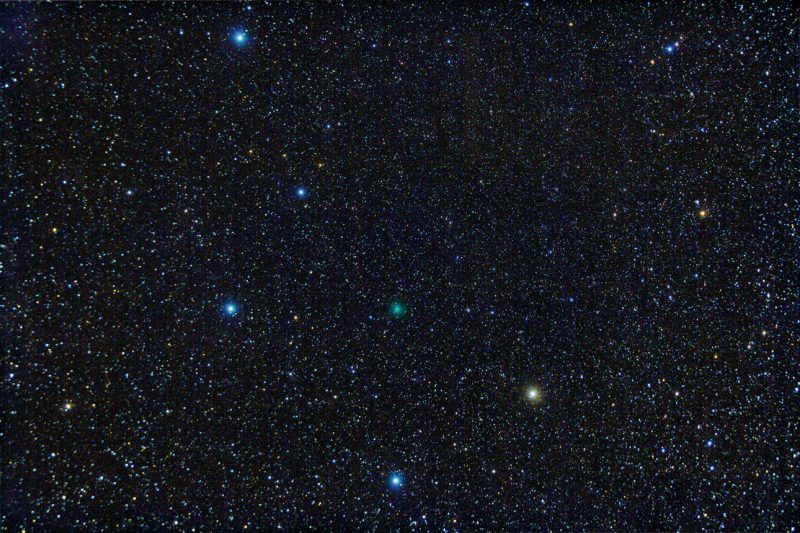
Help EarthSky stay an independent voice! Donate here.
Comet 41P/Tuttle-Giacobini-Kresák – first detected in 1858 – will be making the closest flyby of Earth since its discovery on April 1, 2017. It’ll zoom past at a very safe distance of around 13.2 million miles (21.2 million km), or some 50 times the moon’s distance. Amateur astronomers with small telescopes are already watching, and more people will see the comet in the coming days, especially since Slooh plans to turn its telescopes in the Canary Islands the comet’s way. Slooh’s presentation will Friday, March 31, beginning at 8:30 p.m. EDT (that’s April 1 at 00:30 UTC; translate to your time zone).
Space.com said:
The comet’s perihelion point, which is that part of its orbit taking it closest to the sun, lies just outside Earth’s orbit. This year, the perihelion passage occurs April 12, when the comet will be 97.1 million miles (156.3 million km) from the sun.
But because the orbit of the comet nearly parallels the orbit of Earth at this point, there will be a six-day period — from March 29 through April 3 — when Tuttle-Giacobini- Kresák will be very near to its closest point to Earth.
The comet is in the far-northern sky. That’s not good news for Southern Hemisphere stargazers, but Northern Hemisphere stargazers with small telescopes can now see the comet in dark skies for much of the night. That’ll be the case from now until mid-April. The comet is passing in front of the stars of the constellations Ursa Major the Greater Bear (home of the famous Big Dipper asterism) and Draco the Dragon.

One orbit of this comet around the sun takes about 5.5 years. But of course early skywatchers with telescopes – who were the first to observe this comet – didn’t know that. Astronomer Horace Tuttle of Harvard College Observatory was the first to observe this comet on May 3, 1858. Professor M. Giacobini at the Nice Observatory in France was the second on June 1, 1907. But it wasn’t until L’ubor Kresák, a Slovak astronomer, picked up the comet while scanning with his giant 25 x 100 binoculars on April 24, 1951 that astronomers began to realize that the comets of 1858, 1907 and 1951 were all the same comet. Comets are named for their discoverers so this one carries all three names: Tuttle-Giacobini-Kresák.
Read the full story of this comet’s history from Joe Rao at Space.com
Truth be told, it’s likely to be an unspectacular comet, but interesting if you’ve never seen one. And, of course, it’ll be exciting to those amateur astronomers who stand outside on these chill spring nights – search for it – and manage to pick it up.
However you manage to see it, enjoy it!
View the comet online via Slooh Friday, March 31, beginning at 8:30 p.m. EDT (that’s April 1 at 00:30 UTC; translate to your time zone).

Bottom line: You need a telescope to see Comet 41P/Tuttle-Giacombini-Kresák, which comes closer to Earth on April 1, 2017 than it has since its discovery. Or view online, via Slooh.











